
I can’t get over these carved pumpkins by sand sculptor and pumpkin-carving extraordinaire, Ray Villafane. It’s hard to believe these are actual pumpkins. I wonder how long it takes him to create one?

More after the jump…

I can’t get over these carved pumpkins by sand sculptor and pumpkin-carving extraordinaire, Ray Villafane. It’s hard to believe these are actual pumpkins. I wonder how long it takes him to create one?

More after the jump…
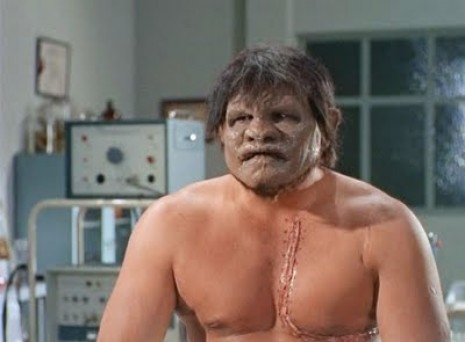
I saw this trailer for Mexsploitation cinematic oddity Night of the Bloody Apes at a drive-in movie in the 1970s with my parents and younger sister. I must have been all of 6 or 7 years old. We were watching a Hercules/Hercules Unchained double bill featuring Steve Reeves. Between films this lurid trailer came on. What an impression it left! Scared the crap out of me and I had vivid nightmares about bloody apes for some time afterward. Looking at it now, it just doesn’t seem quite as scary, but it sure is a lot funnier than I remember it being. Bare breasts, internals organs and, natch, wrestling, this one has it all. The film’s “production value” came in the form of several minutes of footage shot during an actual open heart surgery. That’s not exactly a “special effect” if you are squeamish!
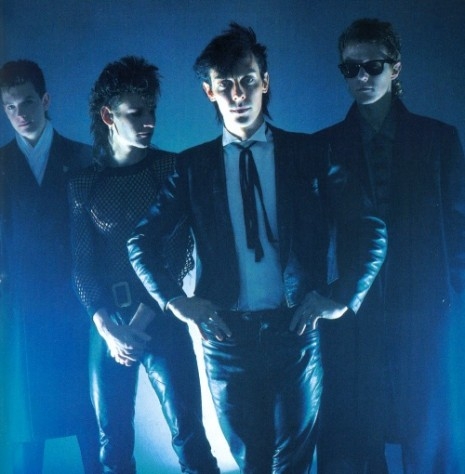
Gotham - Bauhaus in concert, filmed at New York’s Hammerstein Ballroom, on September 9th and 10th, 1998, as part of their reunion tour.
Track Listing:
01. “Double Dare”
02. “In the Flat Field”
03. “A God in the Alcove”
04. “Kick in The Eye”
05. “Hollow Hills”
06. “In Fear of Fear”
07. “Boys”
08. “She’s In Parties”
09. “Passion of Lovers”
10. “Dark Entries”
11. “All We Ever Wanted”
12. “Spirit”
13. “Bela Lugosi’s Dead”
14. “Telegram Sam”
15. “Ziggy Stardust”
16. “The Passenger”
Bauhaus - Shadow of Light. More lipstick and cheekbones from Northampton’s famous sons.
Track Listing:
01. “Bela Lugosi’s Dead” (live)
02. “Telegram Sam”
03. “Rosegarden Funeral Of Sores” (live)
04. “Mask”
05. “Spirit”
06. “In The Flat Field” (live)
07. “Ziggy Stardust”
08. “Hollow Hills” (live)
09. “She’s In Parties”

Paul Nelson had an unabashed passion for the music, cinema and literature he loved. His immersion in the culture of rock and roll and affinity for its creators made him more than just an observer. He didn’t sit outside of the music, he lived in it. If it’s possible for a writer to be embedded in rock and roll, Nelson was embedded. From his early days as co-founder, editor and writer of the rootsy The Little Sandy Review and his influence on a young Bob Dylan, to his days as a contributor and editor at Rolling Stone magazine and A&R man at Mercury Records (he signed the New York Dolls), Nelson did more than chronicle the musical landscape of several decades, he helped define it. I can only think of a handful of music critics who had the intensely personal relationship to what they wrote about that Paul did - Lester Bangs, Robert Palmer, Chris D. and Nick Kent come to mind, though Paul was very much his own man with his own distinctive style and point of view.
Paul forged friendships with Dylan (see the video below), Warren Zevon, Leonard Cohen, Jackson Browne, Rod Stewart, The New York Dolls, Clint Eastwood, hardboiled novelist Ross McDonald, among many other iconic figures in music, literature and cinema. He managed to do it by being as serious in writing about pop culture as the artists who were creating it. He shared his life and thoughts (which were basically steeped in movies, music and books) with the people he covered, built bridges of trust, and ended up being the kind of guy who writers and performers listened to, confided in and, when Paul was going through his own personal hell, rescued.
Nelson never became as well-known among rock fans as many of his peers, mainly because he was just too damned tough on himself as a writer and as a result wasn’t very productive. But what he did write is generally considered to be some of the best to ever appear on the pages of Rolling Stone. And when he couldn’t write at the level he expected of himself he just stopped. But while he was writing, he was as they say, a critic’s critic, admired by some of the best essayists, reviewers and thinkers in both music and film. Mikal Gilmore, Greil Marcus and Nick Tosches, Jay Cocks, Eastwood, among many, were big supporters of Nelson and, in the end, many were coming to his aid as he struggled with poverty, poor health and depression.
Paul didn’t sell his soul for rock and roll, but he may have pawned his heart.
Kevin Avery’s biography of Paul Nelson, Everything Is An Afterthought, The Life And Writings Of Paul Nelson, combines Avery’s reverent, engrossing and richly detailed depiction of Nelson’s life with interviews with the musicians, filmmakers and writers who knew Paul during his four decades of being everywhere but nowhere. With his quiet presence, cloistered life, and low tolerance for bullshit, Paul was not a natural when it came to the fame game or compromising his standards for the sake of a buck. For that reason he never managed to parlay his great skills into a business stratagem. There was something almost spiritual about Paul, an aura, he could be at the center of what was happening without anybody noticing until he had left, leaving his trace like a trail of cigarette smoke crossing paths with a beam of moonlight. Once you think about it, it’s gone…an afterthought.
Everything Is An Afterthought also collects a motherlode of Paul’s writings, some published for the first time. If you’ve never read his work, you’re in for a highly entertaining and compelling journey, full of intimate and insightful encounters with legends like Rod Stewart, Eastwood, Jackson Browne and Zevon (whose life he may have helped save) and critical essays that are classics in a field where there are very few classics.
Nelson could really nail it when it came to his appreciation of punk and most everything else, but he loses me in his almost religious zeal for the music of Jackson Browne and his disdain for Patti Smith. But when a critic gets so much right, he/she compels you to re-think assumptions and question your own obsessions and biases. So based on his positive take on Jackson Browne, I went out and bought several of the songwriters CDs for the first time in my life. After listening to them as much as I could bear, I realized there was no changing my mind on Browne. I don’t get it. And when it comes to Patti Smith, Paul doesn’t get it. But the thing I really appreciate in reading Paul’s writings is you get to a place where even if you disagree with him you want to really explore why. He challenges you, not outrightly, but through the sheer force of his own enthusiasm and the particulars of why he digs what he digs. That’s what great rock writers do - they send you to the music.
Of all the books I’ve read this year, Everything Is An Afterthought is the one that has meant the most to me. In Paul Nelson I see a little bit of myself. I think any artist who has ever been trapped in that dark zone between desire and desolation, creation and emptiness, may understand what made Paul Nelson both a beautiful soul and a tragic one. But as sad as Paul’s life was toward the end, it is what is left on the page that makes you understand that, when all is said and done, life is good when you do what you love and you do it not only for the sheer pleasure of it but also as some kind of act of faith. Paul was a true believer and movies, music and books were his holy sacraments.
Paul died in July 2006 in a small New York City apartment on 78th street. He had been dead for a week when his body was discovered. It sounds like a lonely death but Paul was surrounded by videotapes, records, CDs and books. So, one might say, he died among friends.
Fantagraphics Books is releasing Everything Is an Afterthought: The Life and Writings of Paul Nelson next month.
Kevin Avery talks about his book:
Marc Campbell: What is it about Paul Nelson that inspired you to write a book about him?
Kevin Avery: I first discovered Paul’s writing in Rolling Stone, when I was a teenager living in Salt Lake City, Utah. His words connected with me in a way that critical writing seldom—if ever—did. You could tell it was important for him to accurately convey how he heard the work he was writing about; how it made him feel. At the same time, there was often the suggestion that whatever he wrote about was in some way part of his own story. Though it was never overt. There was an ongoing mystery to it.
In any case, as the years went by, it just seemed increasingly criminal to me that this amazing writer’s work was pretty much relegated to back issues of old music magazines that, by and large, were only available on eBay. I wanted to do something about that.
Marc: At one time, rock and roll critics were almost as interesting as the music and artists they wrote about. I’m thinking of Lester Bangs, Richard Meltzer, Nick Kent, Cameron Crowe, Lenny Kaye and Paul Nelson, among others. They were kind of like literary rock stars. Do you think Paul had problems dealing with the attention he was receiving as a high profile critic and was he too much of a purist to last in that environment?
Kevin Avery: I don’t think he put himself into the position where he could be the recipient of that attention. He often withdrew to his apartment, behind the safety of a closed door and a prehistoric answering machine that his friends grew to despise. Even when he did frequent the Seventies rock scene, there was something “alone” about him.
As for the second part of your question, I don’t know if I’d label him a purist. It’s difficult to call someone a purist who is equally willing to embrace the music of Bob Dylan, Bernard Herrmann, Jackson Browne, the Sex Pistols, and the Ramones. It was the fact that he wasn’t a purist that got him in trouble with the traditional folksters in the Sixties—because he championed Dylan when he plugged in and went electric.
Marc: The role of the rock critic seems greatly diminished these days. Is it a dying art?
Kevin Avery: To be honest, I don’t follow it that much anymore. I think part of the reason Paul stopped writing critically wasn’t because rock criticism was becoming diminished but rather the music he used to love writing about was becoming diminished.
Marc: Paul was ahead of his time when it came to championing punk bands like The NY Dolls and The Ramones. As a music editor for Rolling Stone he was discouraged from being a cheerleader for punk. In retrospect, he was right about the importance of punk and Rolling Stone was like an old hippie in refusing to embrace a new generation of rockers. The cost of being ahead of your time can be high and I think Paul suffered as a result. Do think this rejection of his aesthetic/taste by the old guard was one reason that he abandoned rock writing?
Kevin Avery: It wasn’t so much the rejection by the old guard as it was the hesitancy of audiences at that time to buy the music. As a result, a lot of the bands broke up and, to quote Paul, “rock got rather uninteresting.” Even some of his favorite, more commercially viable artists were letting him down. That, combined with severe seismic shifts in his personal life, caused him to lose interest in the music.
Marc: What was it about Paul that allowed him to become friends with such notable artists as Leonard Cohen, Bob Dylan and Warren Zevon? He seemed closer to his musician friends than he was to other critics.
Kevin Avery: He certainly had his close critic friends—Dave Marsh and Jay Cocks immediately leap to mind. But I understand the question. He was able to create that close bond with musicians, I think, because they sensed that here was a guy who not only understood their work, but he also understood what they went through to produce that work. He was a kindred spirit in the deepest sense.
Marc: Paul’s writing style is cleared influenced by the detective novelists and film noir that he admired. I think he was more suited to a life of being a novelist than being involved in the fickle and trendy world of rock and roll. Would you agree?
Kevin Avery: Yes and no. I agree that he could be the most beautiful stylist, and that that style would have been well suited to novels. Some of his longer pieces—“Rod Stewart Under Siege,” “Warren Zevon: How He Saved Himself from a Coward’s Death,” and his noir-influenced essay about Dylan—more than hint at what he might have accomplished novelistically. But those pieces did not come to him easily. While he certainly had those aspirations, he didn’t seem to have the temperament to withstand a novel-length work.
Marc: Your own style of writing has a novelistic feel in that it doesn’t just settle for conveying facts or describing situations but creates a drama and a certain tension that had me flipping through the pages of “Everything Is An Afterthought” as though I were reading a good mystery. Have you written fiction or have any plans to?
Kevin Avery: Some of my earliest published pieces were short fiction, which are now part of an unpublished short story collection. In 2006, I had just finished the first draft of a novel when I received word of Paul’s death. That same day I set the novel aside and began work on what became Everything Is an Afterthought.
Marc: Paul’s friendship with Clint Eastwood seems like an odd pairing. Why do you think they had such an affinity for each other?
Kevin Avery: Unsurprisingly, Clint’s a no-nonsense guy. So’s Paul. To quote Steve Forbert, “He liked it pretty real.” Eastwood, who has little use for Hollywood or its sycophants, must have found Paul and his Midwestern honesty quite refreshing. As somebody else put it, there wasn’t a jive bone in Paul’s body. I truly think Clint just enjoyed hanging out with him.
Marc: I remember when Eastwood was seen as some kind of fascist pig back in the early 70s because of his role as Dirty Harry. In the book, he comes off as a pretty cool guy, someone who was there for Paul when he was going through some rough patches. What’s your take on Eastwood?
Kevin Avery: Paul was one of the very first critics to, in a national publication—Rolling Stone—challenge those other critics and their dismissal of Dirty Harry. He clearly saw in Eastwood an acting and directing talent that, especially at that time, the majority of critics didn’t. And even if they had, it wouldn’t have been fashionable to say so. But Paul didn’t fret about fashion. He liked what he liked.
As far as my take on Eastwood, I really don’t have one. I enjoyed listening to the tapes of his conversations with Paul. It’s easy to see why Paul liked him. They clearly formed a friendship, and I really wanted that aspect of their relationship to come across in the book.
Marc: Paul certainly had a self-destructive streak. His diet of Coca Cola and candy bars, his aversion to vegetables and addiction to tobacco seems like a form of slow suicide. Do you think he was basically an unhappy person?
Kevin Avery: I don’t think he was a happy person, but he certainly found enjoyment in the music and books and, especially, movies he admired. And no doubt he had periods of great unhappiness. He definitely, by his own admission, had bouts of depression.
Marc: Paul’s writing has a classic, timeless feel. There’s nothing “hipster” or gimmicky about it. He doesn’t have Lester Bangs gonzo style for instance or Richard Meltzer’s William Burroughs-like fractured edginess. He’s more disciplined and low-key. He writes about rock and roll (perhaps the least respected art form) with the sensibilities of a serious writer. Do you think the fact that he wasn’t into booze, drugs or being king of the hipsters, might have figured into why his writing is free of a lot of hippie dippy excess and pop culture overkill?
Kevin Avery: It goes back to what Steve Forbert said about Paul liking it “pretty real.” I think Paul was wise enough to know that flowering up his writing like that would only serve to date it.
Marc: If Paul were alive and you had him over to your house what music would you put on the sound system?
Kevin Avery: Whatever he wanted to hear.
Marc: Is rock and roll dead?
Kevin Avery: Recently, someone asked me who was the most prominent critic ever to declare that? And when? A little research revealed that, according to Robert Christgau, Richard Meltzer started saying it back in 1968. Based on the music that’s come about since then, he was clearly mistaken.
Marc: What’s your next project?
Kevin Avery: In 1976, Paul conducted over forty hours’ worth of interviews with detective novelist Ross Macdonald. I’m considering publishing a book based on those interviews. And, of course, there’s that novel that I set aside back in 2006.
In this short clip from Martin Scorsese’s Bob Dylan documentary, No Direction Home, Paul Nelson recounts the days when Dylan was a vinyl thief.
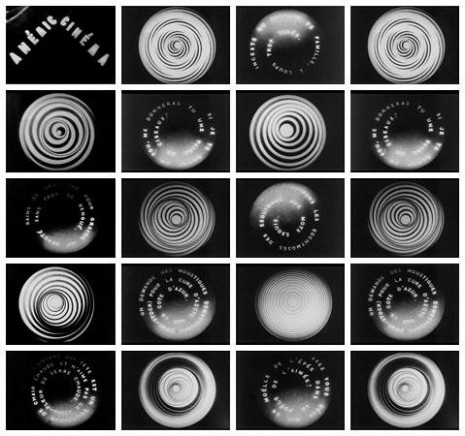
Duchamp’s Anemic Cinema is recalled as a collaboration between Duchamp and Man Ray, but it was really a collaboration between May Ray and Duchamp’s female alter ego Rrose Selavy (c’est la vie, geddit?). It was made with Duchamp’s kinetic sculptures, the Rotoreliefs, which I have written about before here. The title Anemic Cinema is a near palindrome.
Previously on Dangerous Minds:
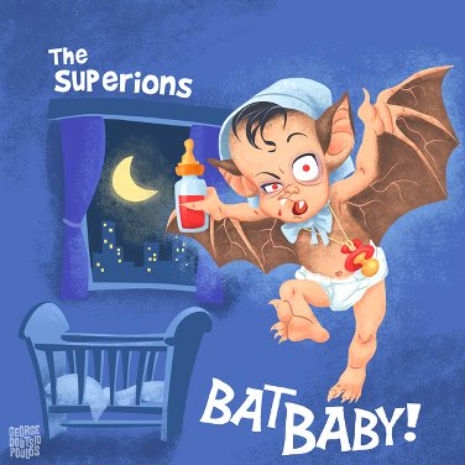
Here’s a fun music video homage to B-Movies from The Superions, Fred Schneider of the B52’s other band (who unsurprisingly don’t sound a whole lot different). While the tune is reminiscent of “Rock Lobster” as replayed by Keyboard Cat, the hook will be running around in your head for some time. The video follows the adventures of the titular Batbaby, and features an intro from the very intriguing Babette Bombshell, who comes off like a cross between Elvira and Divine. Well, it is Halloween after all:
The Superions “Batbaby”
The Superions’ Batbaby EP is available to buy on MP3 here.

No pix just sound. Joy Division live at the Bowdon Vale Youth Club, Altrincham, England, March 14th 1979. Close your eyes and you’re there.
Set list:
01. “Exercise One” 0:00
02. “She’s Lost Control” 2:54
03. “Shadowplay” 7:11
04. “Leaders Of Men” 10:58
05. “Insight” 13:23
06. “Disorder” 17:04
07. “Glass” 20:36
08. “Digital” 24:03
09. “Ice Age” 27:00
10. “Warsaw” 30:15
11. “Transmission” 32:37
12. “I Remember Nothing” 36:07
13. “No Love Lost” 42:40
Pix and sound. Grant Gee’s impressive 2007 documentary Joy Divsion definitively brings together all the elements of the band’s story (some parts of which has been heard in other films, in other documentaries) together into one complete and engrossing film. Written by Jon Savage and containing interviews from Bernard Sumner, Stephen Morris, Peter Hook, Tony Wilson, Rob Gretton, Peter Saville, Anton Corbijn, Genesis P. Orridge, together with archive footage of Joy Division, Martin Hannett, John Peel and Ian Curtis.
This version is in English with sub-titles in Spanish.

Candy should, I repeat should be off the scale incredible. But it’s not.
Candy was a film that was always talked about, but no one ever saw it. The poster of Candy topless in the airplane cockpit would always be for sale in the back pages of magazines like “Famous Monsters of Filmland” next to ones of King Kong and Frankenstein and it became a familiar image of the era. But the movie you never saw. Not on any late night movie show, never on a Sunday morning “Million Dollar Movie” or anything like that, Candy was seemingly banned from TV for being too racy and for whatever reason was never released on VHS either. Nor was it ever on HBO or Showtime. It was the great lost movie in my eyes.
I became mildly obsessed with this film I could never see and went about collecting movie posters, lobby cards, publicity photos and I own several different versions of the novel by Terry Southern and Mason Hoffenberg with different groovy covers. The mythical Candy became a cult movie Holy Grail for me. I really built it up in my mind. For years I tried to get hold of a copy in the tape trading underground, but the best I was ever able to find was still unwatchable. Then finally it came out on DVD. It was like Christmas had arrived.
But it sucked! Really sucked. It was such a let down!
I mean just LOOK at the cast: Ringo Starr (Emmanuel, the Mexican gardener), Charles Aznavour (the horny hunchback), Marlon Brando (Grindl, the horny (fake) Indian guru), Richard Burton (MacPhisto, the drunk, horny Welsh poet), James Coburn (egotistical surgeon), John Huston (dirty old man doctor) and Walter Matthau (horny military general). Sugar Ray Robinson and Anita Pallenberg make cameo appearances. How could you go wrong with a cast like that?
Let’s not forget the amazing opening space travel sequence by Douglas Trumbull who went on to make 2001 with Stanley Kubrick. And the soundtrack by The Byrds, Steppenwolf and soundtrack great Dave Grusin (it’s INCREDIBLE and easy to find on audio blogs). The script was adapted by Buck Henry. HOW could this fail?
It even featured the decade defining pulchritude of Miss Teen Sweden, Ewa Aulin, in the title role of “Candy Christian,” the ultimate All-American girl.
But despite all this Candy is a terrible film and even worse, it’s boring.
One of the things that must have mucked up things badly for the production is—and I am just theorizing here—the contracts for the lead actors. These were THE leading actors of the day, all of them top drawer A-list 60s talent. After watching Candy the thought occurred to me that Marlon Brando’s agent probably asked how much screen time Richard Burton was getting and demanded the same for his client. Then James Coburn’s manager asked the same question and demanded equal time for his client and so on and so until each actor was guaranteed “Most Favored Nations” equal screen time. How else to explain the film’s structure? It’s maddening to watch and Candy feels like it’s never going to end.
STILL, I’m not saying it’s so bad you shouldn’t watch it. Actually I think that if this sounds even remotely intriguing to you then it’s definitely worth seeing. It’s not good, no, we’ve already established that fact, but it is a super insane, trippy, campy relic of the 1960s with some of the most iconic actors of the decade behaving like total hambones, each trying to outdo the other in chewing up the scenery.

Photo credit: 1980 © Brian Rose/Ed Fausty
French film maker Marie Martine directed this short documentary that captures the spirit and flavor of New York’s Lower East Side before the yuppie invasion. Made in 1983, the film features music by Alan Vega, Martin Rev, The False Prophets and scenes of artist Scott Borofsky creating street art.
In the seventies hundreds of buildings were abandoned, buildings with no heat, no hot water, no locks. The landlords had wrung all the money they could get out of them….Today [1984] whole blocks between Avenues A and D are lined with the carcasses of buildings. Vast stretches of land are covered with crumbled bricks and cement. Until recently, lines of drug buyers snaked around the blocks….When Father Moloney found a dead body near the Christadora Building last year, the police acted almost unconcerned. ‘We are in a no man’s land,’ he was told. ‘They can dump anything they want here.” New York magazine - May 28, 1984.
I love the fleeting glimpses of downtown faces.
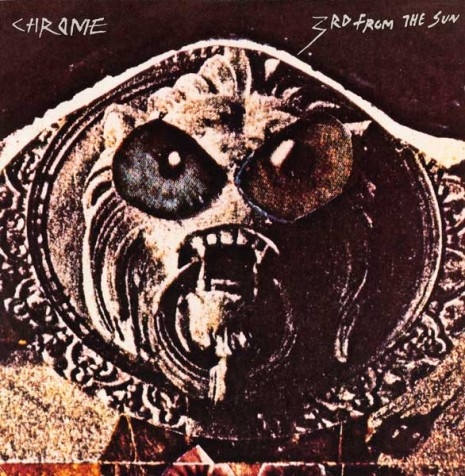
I was exposed to Chrome pretty early on, in both their career and my own as a music fan. A kid in my hometown, one of only a tiny handful of “punkers” (as we were called in the 7th grade), had Alien Soundtracks and we were all pretty sold on it, all of us punkers. They sounded like the Stooges channeled through a Philip K. Dick novel (or A Clockwork Orange, of course). Much later I saw Helios Creed in concert and his psychotic/psychedelic guitar playing turned my body into molecules. Then I’d be solid again. Then molecular. Someone stage-diving kicked me in the eye with their Doc Martens, but it was still a rad experience! Did I mention I was on acid at the time?
Here’s a clip for my top favorite Chrome song, “Meet You In the Subway.” Dig their bezoomny outfits, my droogie brothers!

Here are some 30 second excerpts from all of the tracks on the new Lou Reed/Metallica album Lulu.
What do you think?
Though it’s hard to judge an entire album based on 30 second clips, some of the bits sound to me like the highly amplified rumbling sludge of a lower intestinal tract infection fronted by the guy who works the complaint desk in Hell. Muddle machine music.
Track two, “The View,” is presented in its entirety.

I thought I’d seen every Gainsbourg/Birkin video out there, but this is a new one for me: Jane singing ‘Di Doo Dah’ from 1973.
Song written by her paramour Serge Gainsbourg.

Michael Winslow performs Led Zeppelin’s “Whole Lotta Love” on Norwegian TV show Senkveld med Thomas og Harald. Holy crap!
Thanks you, Skye Nicolas and High Definte!